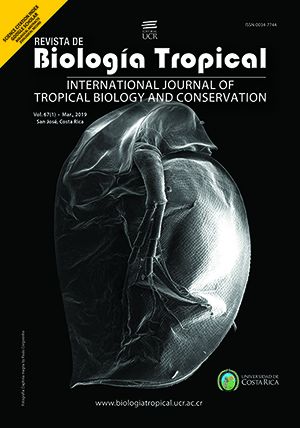Abstract
Domestic animals are involved in a large number of traffic accidents and they represent danger to humans due to their size. Despite this, few studies consider domestic animals. That is why we evaluate mammals’ roadkill aggregations in order to locate them and to determine if wild and domestic mammals’ roadkills overlap. In addition, we investigate the influence of the landscape on the location of the aggregations. This study was carried out on the BR-050 highway, an area of Cerrado biome, in Southeastern Brazil. The monitoring was executed from April 2012 to March 2013, by car, at an average speed of 60 km/h, with two observers looking for roadkills on the highway. We found 482 mammals’ roadkills, including 260 (54 %) wild mammals, 164 (34 %) domestic and 58 (12.0 %) undetermined specimens. Of the 21 recorded mammal species, five were domestic. The wild mammals’ roadkill rate was 0.03 (± 0.02) individuals/km/day and the domestic roadkill rate was 0.02 (± 0.01). We detected roadkill aggregations for wild and domestic mammals. Roadkill hotspots of domestic mammals and wild mammals did not overlap. The variables that had the highest influence on wild mammals’ roadkill probability were: agriculture and silviculture cover as positive effects and distance to the nearest river, to the urban perimeter and to a natural fragment as negative effects. For domestic mammals these variables were: area of the smallest fragment and distance to a natural fragment as positive effects and silviculture cover as a negative effect. The explanation for the wild and domestic mammals’ roadkill hotspot non overlapping seems to be the effect of each variable in determining the roadkill hotspot since their effect is different for wild and domestic mammals. On the other hand, this non overlapping can be a result of domestic mammals’ scavenging habits. We propose different kinds of mitigation measures in order to reduce domestic and wild mammals’ roadkill.
##plugins.facebook.comentarios##

This work is licensed under a Creative Commons Attribution 4.0 International License.
Copyright (c) 2019 Carine Firmino Carvalho-Roel, Ana Elizabeth Iannini Custódio, Oswaldo Marçal Júnior







